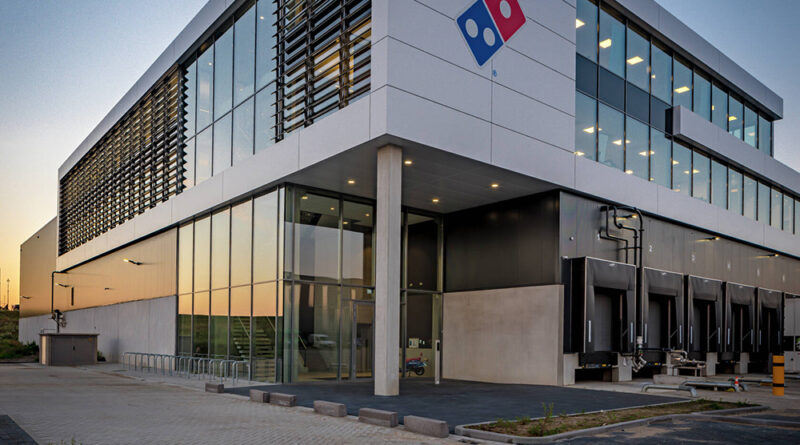History of Domino’s Pizza in Ypsilanti Michigan
Domino’s Pizza, headquartered in Ann Arbor, Michigan, is one of the largest and most recognized pizza chains in the world. Founded in 1960 by brothers Tom and James Monaghan, the company has grown from a single location in Ypsilanti, Michigan, to a global empire with thousands of stores worldwide. This article delves into the history of Domino’s Pizza, highlighting its origins, innovative business practices, and its rise to becoming a dominant force in the fast-food industry.
Early Beginnings
The story of Domino’s Pizza begins in 1960 when Tom Monaghan and his brother James purchased a small pizza restaurant called DomiNick’s in Ypsilanti, Michigan, for $500. James traded his interest in the business to Tom for a used Volkswagen Beetle after just eight months, leaving Tom as the sole owner. Tom Monaghan, who was passionate about creating a successful pizza business, set out to expand and improve the restaurant.
The Birth of Domino’s
In 1965, Tom Monaghan renamed the restaurant to Domino’s Pizza, Inc. after the original owner of DomiNick’s insisted that the Monaghan brothers stop using the name. The new name was inspired by the three dots on a domino piece, representing the three locations that existed at the time. Monaghan initially planned to add a new dot for each new store, but this idea was soon abandoned as the franchise rapidly expanded.
Franchise Expansion
Domino’s began franchising in 1967, opening its first franchise location in Ypsilanti. The company’s emphasis on consistent quality and efficient service quickly attracted franchisees, and by 1978, there were over 200 Domino’s stores across the United States. This rapid expansion was fueled by Monaghan’s commitment to maintaining control over the product and brand, ensuring that each store met Domino’s high standards.
Innovations in Delivery and Service
Domino’s Pizza distinguished itself in the competitive pizza market through several key innovations. One of the most significant was its pioneering focus on delivery. Domino’s was one of the first pizza chains to offer delivery as a primary service, and it introduced the now-famous 30-minute delivery guarantee in 1973. This guarantee promised customers that their pizzas would be delivered within 30 minutes of ordering or they would receive their pizzas for free. This bold promise not only set Domino’s apart from competitors but also ingrained the brand in popular culture.
In addition to its delivery guarantee, Domino’s introduced the HeatWave bag in 1998, which kept pizzas hot during delivery. This innovation improved the quality of delivered pizzas and further cemented Domino’s reputation for reliable and fast service.
Product Development and Menu Expansion
While Domino’s initially focused on a limited menu of pizza, the company began to diversify its offerings in the 1980s and 1990s. It introduced various crust options, such as the deep-dish pan pizza in 1989, and added side items like breadsticks, chicken wings, and sandwiches. In 2008, Domino’s revamped its pizza recipe, introducing a new crust, sauce, and cheese blend in response to customer feedback.
The company’s commitment to innovation extended to digital ordering platforms. Domino’s was an early adopter of online ordering, launching its website in 1996. In 2007, it introduced the Domino’s Tracker, allowing customers to track their orders in real-time. The company continued to lead the industry with technological advancements, such as ordering via mobile apps, voice assistants, and social media platforms.
International Expansion
Domino’s Pizza began its international expansion in 1983, opening its first international store in Winnipeg, Canada. The company’s global presence grew rapidly, with stores opening in countries across Europe, Asia, Latin America, and Africa. Today, Domino’s operates in over 90 countries, with more than 17,000 stores worldwide.
The company’s international success can be attributed to its ability to adapt to local tastes and preferences while maintaining the core principles of quality, convenience, and service. In many markets, Domino’s offers unique menu items that cater to regional flavors and dietary habits.
Challenges and Resilience
Like any major corporation, Domino’s has faced its share of challenges. The 30-minute delivery guarantee was discontinued in 1993 due to safety concerns and legal issues arising from delivery drivers’ accidents. However, the company continued to emphasize quick and reliable delivery.
Economic downturns and increased competition in the fast-food industry also posed challenges. However, Domino’s resilience and ability to innovate allowed it to weather these difficulties. The company’s focus on digital transformation and customer experience helped it stay ahead of the curve.
Recent Developments and the Future
In recent years, Domino’s has continued to innovate and expand its offerings. The company has invested heavily in technology, introducing features like GPS delivery tracking, autonomous delivery vehicles, and drone delivery trials. Domino’s has also embraced the trend of healthier eating by offering gluten-free crusts, vegan options, and a range of salads.
The COVID-19 pandemic underscored the importance of delivery and takeout services, and Domino’s was well-positioned to meet the increased demand. The company’s strong digital infrastructure and efficient delivery network allowed it to thrive during this challenging period.
Conclusion
From its humble beginnings in Ypsilanti, Michigan, Domino’s Pizza has grown into a global powerhouse, revolutionizing the pizza delivery industry along the way. The company’s commitment to innovation, quality, and customer satisfaction has been the cornerstone of its success. As Domino’s continues to evolve and embrace new technologies, it remains a dominant force in the fast-food industry, poised for continued growth and success.
Discover more from City Towner
Subscribe to get the latest posts sent to your email.




